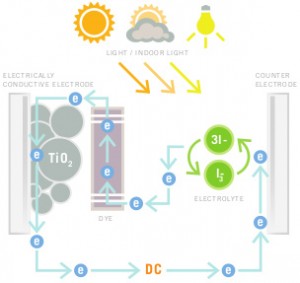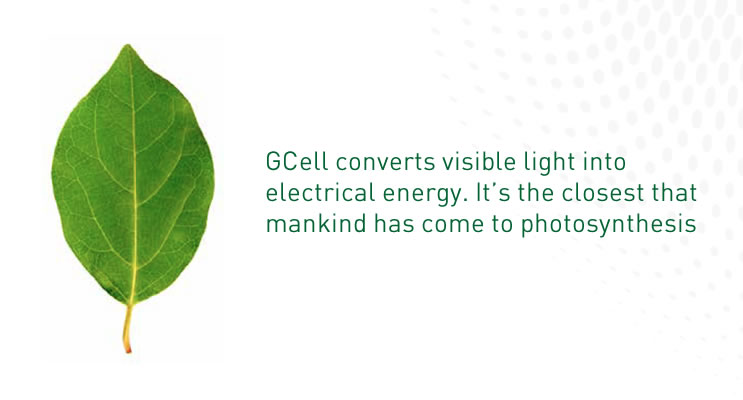This new class of advanced solar cell can be likened to artificial photosynthesis due to the way in which it mimics nature’s absorption of light energy.
Dye Sensitized solar cells (DSSC) were invented in 1991 by Professor Michael Graetzel and Dr Brian O’Regan at École Polytechnique Fédérale de Lausanne (EPFL), Switzerland and is often referred to as the Gräetzel cell, we call it GCell.
DSSC is a disruptive technology that can be used to produce electricity in a wide range of light conditions, indoors and outdoors, enabling the user to convert both artificial and natural light into energy to power a broad range of electronic devices.
How does DSSC work?
- The dye is the photoactive material of DSSC, and can produce electricity once it is sensitized by light
- The dye catches photons of incoming light (sunlight and ambient artificial light) and uses their energy to excite electrons, behaving like chlorophyll in photosynthesis
- The dye injects this excited electron into the Titanum Dioxide (a white pigment commonly found in white paint)
- The electron is conducted away by nanocrystalline titanium dioxide (a nano-scale crystallized form of the titanium dioxide).
- A chemical electrolyte in the cell then closes the circuit so that the electrons are returned back to the dye
- It is the movement of these electrons that creates energy which can be harvested into a rechargeable battery, super capacitor or another electrical device.


